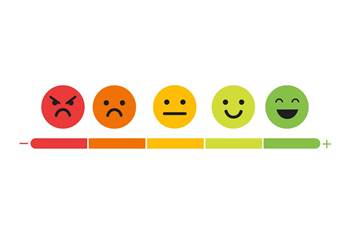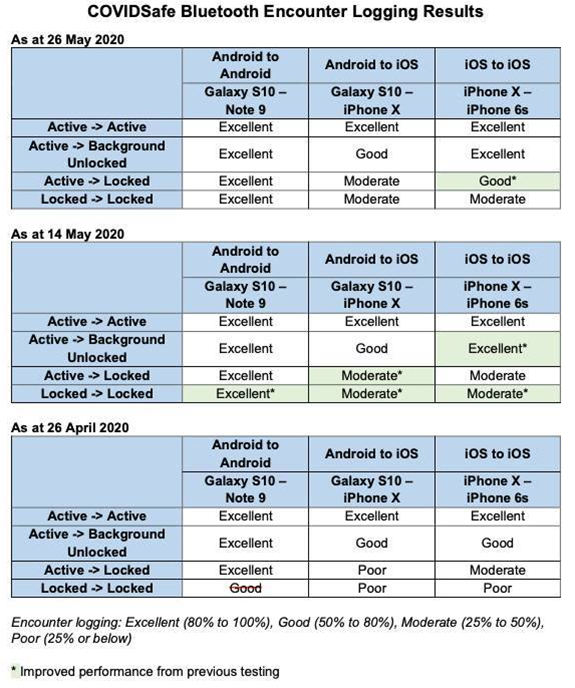The Digital Transformation Agency fielded 20,000 pieces of feedback from the community about the government’s COVIDSafe contract tracing app in its first month of operation, agency chief Randall Brugeaud has revealed.
Speaking at the Virtual Australian Public Sector Innovation Show this week, Brugeaud said “more than 20,000 emails and thousands of phone calls” offering feedback had been received directly following the app's launch in late April.
That may go some way towards explaining the peak IT agency's delay in responding to enquiries from the tech community, including after the release of the source code for the application in early May.
“We worked with users listening to their feedback and adjusting our approach to better meet their needs,” Brugeaud said on Wednesday.
“We leveraged international experience, sharing code with Singapore and the United Kingdom, and our learnings with governments all around the world.
“We worked with users and the tech community and users as well, with more than 20,000 emails and thousands of phone calls received in the first month of operation alone.”
Brugeaud said that feedback from users and the tech community had led “directly to product improvements”, though he did not mention which of the four updates released to date had contained the improvements.
The four releases pushed out to date have contained improvements to Bluetooth performance on iOS devices, as well as privacy enhancements that prompt Android users to remove their user-assigned device names.
The feedback statistics follow the release of documentation late last week that shows improvements in the “Bluetooth encounter logging” following the release of the first two COVIDSafe app updates (14 May and 26 May).
The testing results confirm that iOS to iOS and Android to iOS Bluetooth encounter logging for two locked phones was rated “poor” when the app was first released, though successive app releases have seen this improve marginally.
iOS to iOS Bluetooth logging in all other conditions (active to active, active to background unlocked and active to locked) is now rated either “good” or “excellent”, while Android to iOS Bluetooth logging on active to locked and locked to locked devices is still "moderate".
A poor rating is where an encounter is logged 25 percent of the time or less, while a moderate rating logs encounters 25 to 50 percent of the time.
A good or excellent rating logs Bluetooth encounters between 50 and 80 percent and 80 and 100 percent of the time, respectively.
By comparison, Android to Android Bluetooth encounter logging for two locked phones started life with either a good or excellent rating and is now rated “excellent” in all conditions.
Brugeaud also used his address to double down on earlier reports that the app has been successful in identifying people who weren’t found as part of the traditional contract tracing process.
“[The app is] being used by state and territory disease detectives to successfully find people who are not identified as part of manual contact tracing processes,” he said, adding that there were now more than 6.2 million register users.
“Despite some early reporting to the contrary, COVIDSafe is working, and it's an important part of the government’s response to the pandemic.”
He said the app was “one of the most important, highest profile capabilities the DTA has ever delivered” and would have been difficult to deliver in such a short time frame prior to the pressures of the pandemic.
COVID-19 the agile kick the APS needed
But COVIDSafe was not the only example of where the Australian Public Service was able to pivot, with agencies also moving fast to respond to unprecedented demand for services and addressing the shortfall in the government’s information offering.
Brugeaud said that the Australia.gov.au homepage, which was built by the DTA as a central point for citizens to access information on the pandemic, was “delivered in just under 24 hours”.
It forms the basis of the government’s planned digital experience platform (GOVDXP) - a social media-inspired digital service platform currently being built out by Deloitte, which is eventually expected to replace myGov.
The webpage was released alongside the government’s Coronavirus Australia information app, which was built by Canberra-based tech firm Delv in “three weeks” at the cost of almost $4 million, and the WhatsApp channel, which was built by Atlassian in “just under a week”.
“This group of digital capabilities couldn’t have been delivered using traditional mindsets and approaches. We delivered because we thought and operated differently, and this allowed us to rapidly meet the needs of government and the community,” Brugeaud said.
“My assessment is that the APS has become much more agile during the crisis, working in an agile way has allowed us to respond quickly and flexibly to rapidly changing policy and user needs and iterate delivery to provide incremental improvements.
“The agile approach has also allowed us to take a much more pragmatic view of risks than we might have taken in the past, which is a very good thing.
“While agility was one of the enablers of our success, this sometimes led to criticism from external commentators, many of whom seem to be suggesting that we should have taken more time to deliver closer to perfect solutions.
“I genuinely believe that our approach was right, and the evidence is most definitely supporting this view.”
Brugeaud said that the relevance of the platform had been “proven over time, with more than 20 million hits on Australia.gov.au since its creation, almost four million dowloads of the Coronavirus Australia app and one million users of the WhatsApp channel”.
“Given that just under half of the Australia.gov.au traffic relates to return users, people are seeing value - so we mustn’t be too far off the mark,” he said.





.jpg&h=140&w=231&c=1&s=0)





















